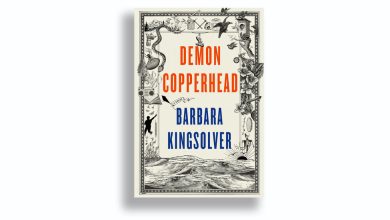For Her Next Round, Toni Tipton-Martin Orders Up a Book of Cocktails

While many in the world of cocktails are familiar with Tom Bullock, renowned for his juleps and long considered the first African American bartender to publish a cocktail manual, fewer know the work of Atholene Peyton, a home economics teacher whose 1906 “Peytonia Cook Book” predated Bullock’s by a decade.
Peyton’s story is just one told in Toni Tipton-Martin’s new book, “Juke Joints, Jazz Clubs and Juice: Cocktails From Two Centuries of African American Cookbooks, a chronicle of the ways in which Black people contributed to American cocktail culture.
“This is really a work of investigative journalism. It’s not just a book of cocktails,” said Ms. Tipton-Martin, a James Beard award-winning author of several cookbooks and the editor of Cook’s Country magazine, who pored through centuries’ worth of published recipes for her new work.
The book is a continuation of her 2015 book, “The Jemima Code: Two Centuries of African American Cookbooks,” which credited Black women for the much of the country’s culinary history and her 2019 follow-up, “Jubilee: Recipes From Two Centuries of African American Cooking.”
“What Toni has done here is essentially create a mixologist’s parallel to what she did in ‘Jubilee,’” said Jessica B. Harris, the author of “High on the Hog: A Culinary Journey From Africa to America,” which has been adapted as a Netflix series. “The two books become a diptych of the food of African Americans, as revealed through their cookbooks.”
Ms. Tipton-Martin owns a vast collection of old cookbooks by Black authors from as early as 1827, and has used that foundation to propel the research and historical context her books are famous for.
For her new book, she relied on cookbooks published by early Black bartenders like Bullock in 1917 and Julian Anderson in 1919. But she also uncovered the contributions of Peyton, a teacher born in Louisville, Ky., whose “Peytonia Cook Book” included a chapter on drinks, with recipes for juleps, gin fizzes, eggnog, a whiskey sour and a manhattan. (Ms. Tipton-Martin discusses Peyton’s Champagne punch in her new book.)
“I can hear the voice of the cook or bar master claiming their intellectual property,” Ms. Tipton-Martin said.
“Juke Joints, Jazz Clubs and Juice” is organized chronologically by craft, which gave Ms. Tipton-Martin the space to write about “all of that Black drink history.” She starts with teaching readers how to brew beer and ferment wine; enslaved and free Black women made those drinks and built beverage enterprises during the antebellum era. Punchbowl drinks tell the stories of Black caterers and food entrepreneurs.
Other chapters are dedicated to the Black bartenders who made layered drinks at taverns in the late 18th century. She ends the book with a section on how some Black people today reference liquor as a form of empowerment, especially in rap lyrics. Beverages like gin and juice — which Snoop Dogg immortalized in song in the 1990s — have deep roots: Similar concoctions appeared in the 1930s in books like “Burke’s Complete Cocktail and Drinking Recipes,” published in 1934. The drink’s origins begin in Africa, Ms. Tipton-Martin said, where people macerated oranges and allowed them to ferment.
Recipe: Gin and Juice
The book goes far beyond cocktails in exploring African American history. Places like juke joints, strategically located near agricultural communities, served as sites where African Americans could escape the daily indignities of segregation. But their clientele were often stereotyped as lazy gamblers, unlike white Americans, whose drinking was portrayed more favorably. This double standard led to a notable absence of writing about drinks by African American authors from the mid-20th century until the 1970s, she said.
“It was surprising and fascinating to me to learn that as part of my ancestors’ desire to be respected, appreciated and valued by the larger society, they just stopped discussing alcohol consumption,” Ms. Tipton-Martin said, likening those stereotypes to the way Black female cooks were mocked with the Mammy character.
She dug just as deep for her recipe research, pulling several historical references and testing each adaptation before completing the recipes for publication. She explains how people served these drinks decades ago, which offers readers ideas for customizing the recipes.
Ms. Tipton-Martin came to her work with little cocktail experience, so she leaned on two consultants: her son Brandon Tipton, a formally trained bartender, and Tiffanie Barriere, a master mixologist and educator in Atlanta. Ms. Barriere said she taught Ms. Tipton-Martin techniques like knowing how long to shake a drink. She also offered some modern alternatives to older methods like shaping ice with a pick and mallet (use pebbled ice cubes or an ice mold instead).
“The beverage community has been waiting for a book like this,” Ms. Barriere said, adding that Black people have long known that their ancestors made an impact on cocktails. “It’s just another ‘aha’ moment.”
Follow New York Times Cooking on Instagram, Facebook, YouTube, TikTok and Pinterest. Get regular updates from New York Times Cooking, with recipe suggestions, cooking tips and shopping advice.





